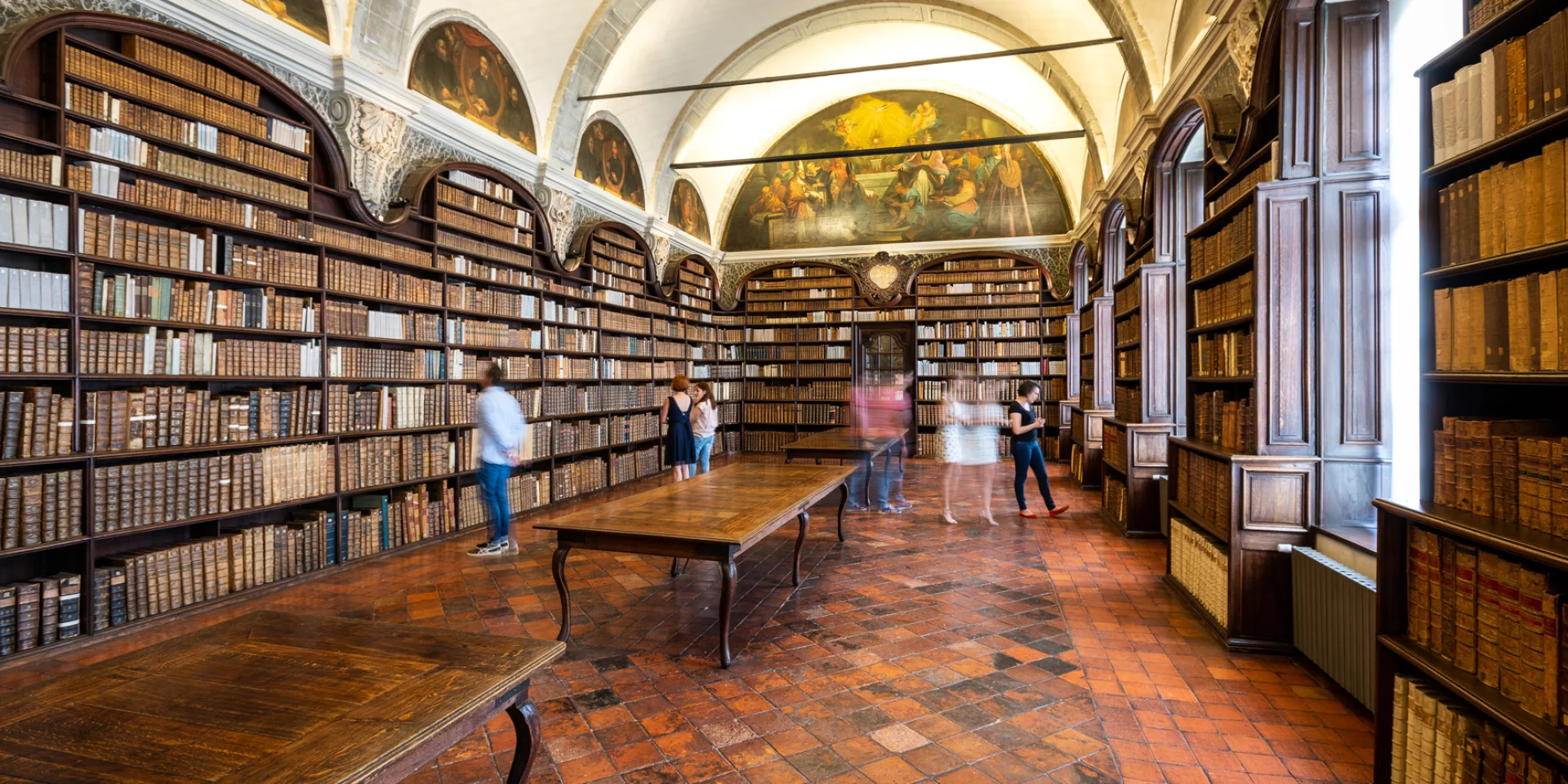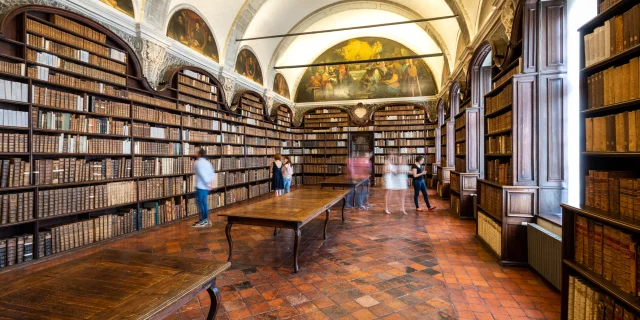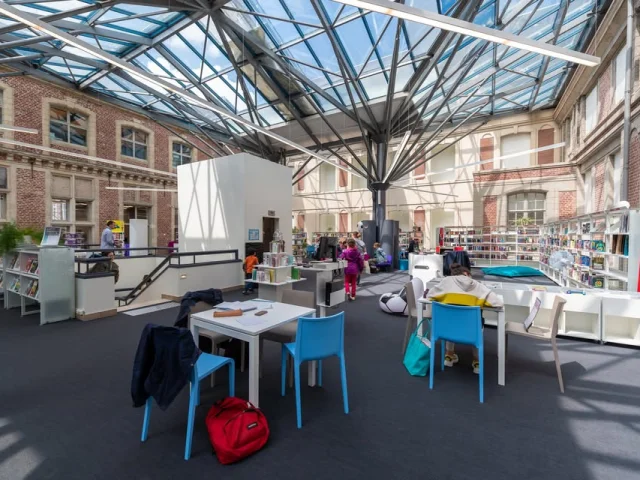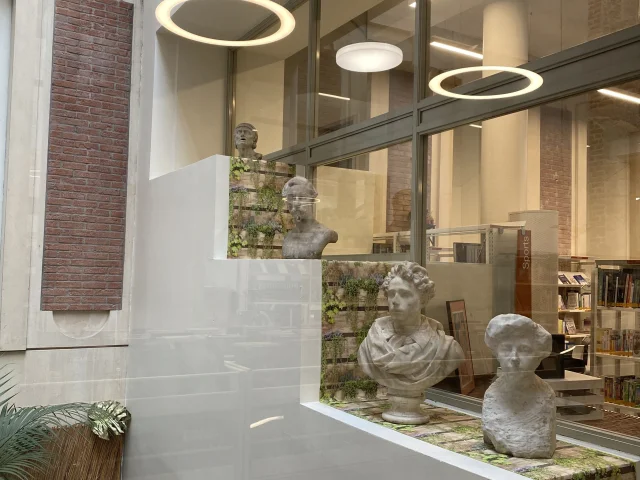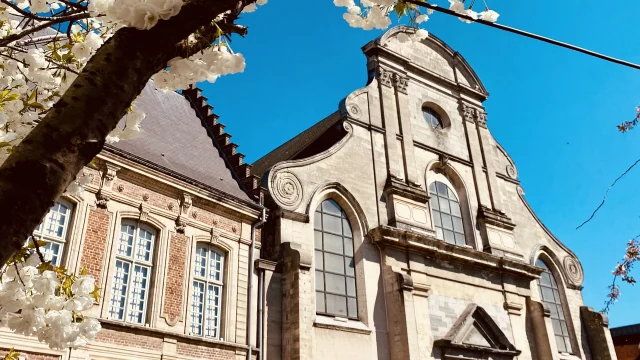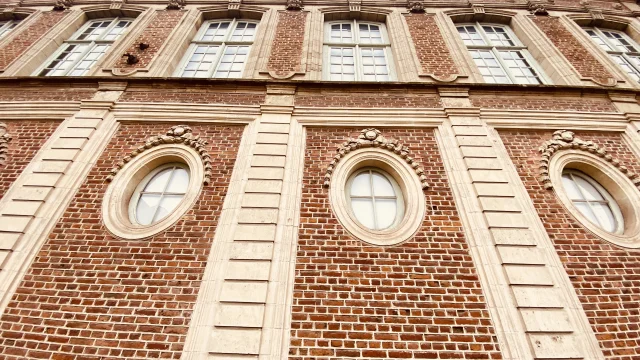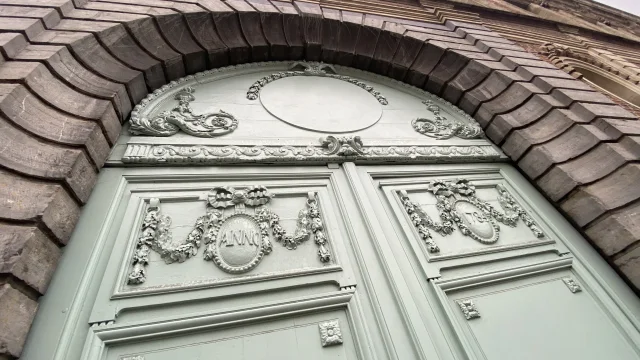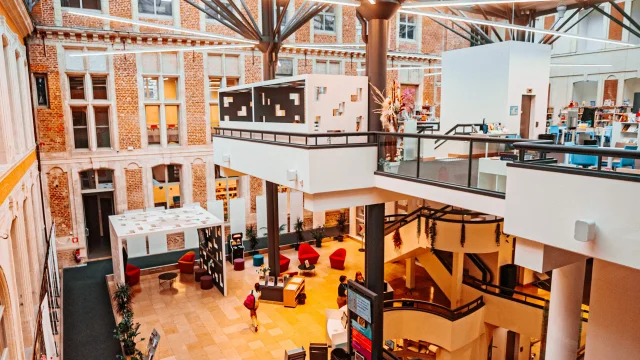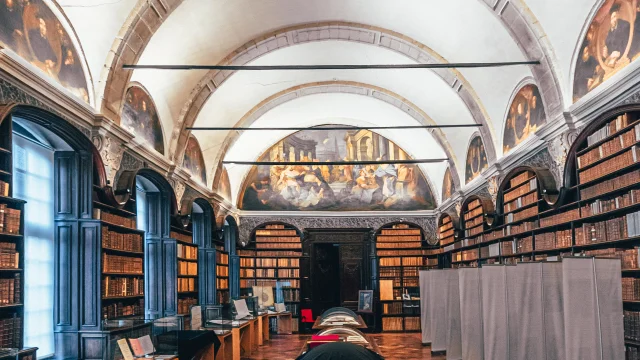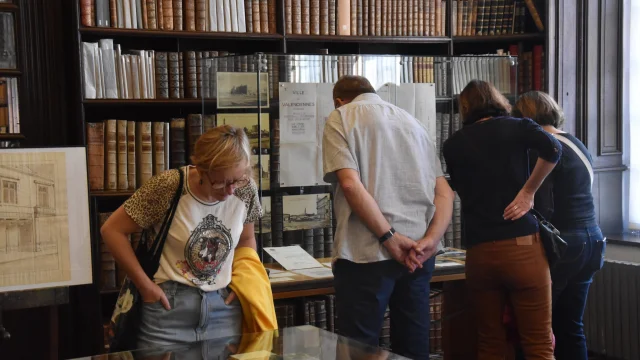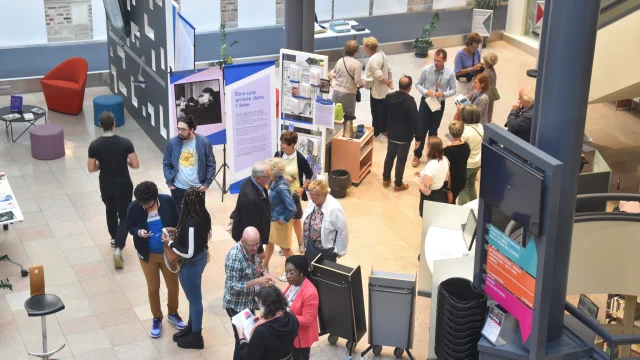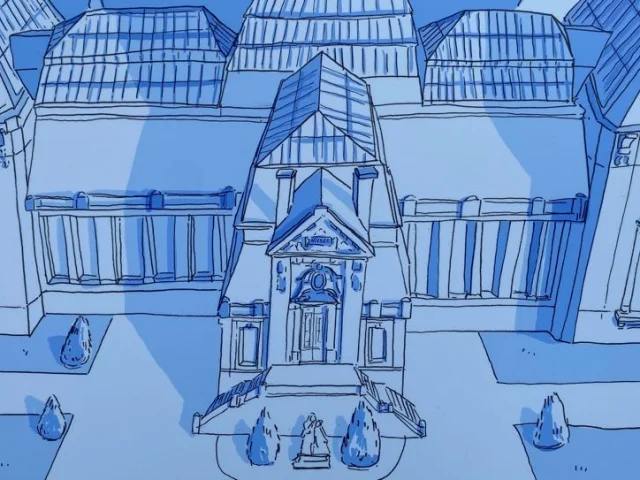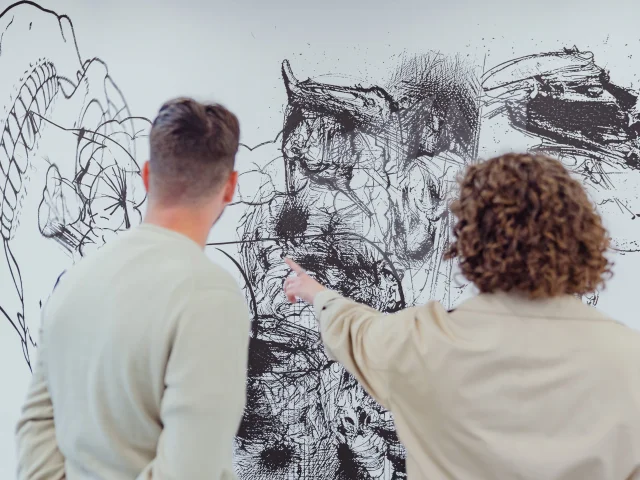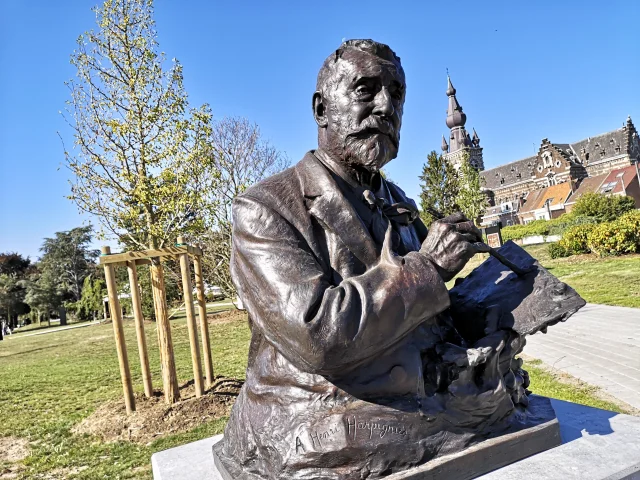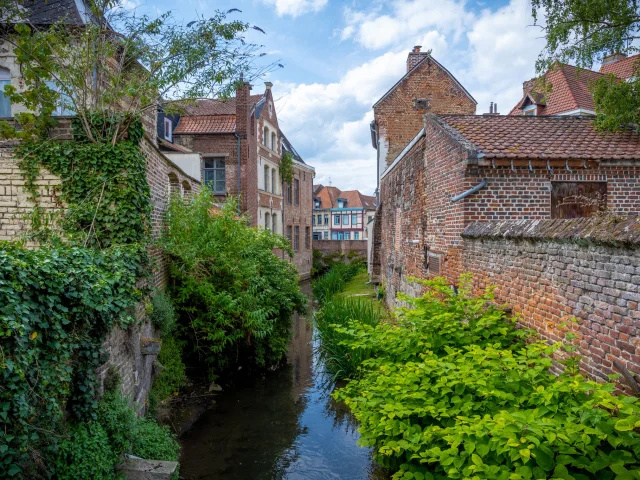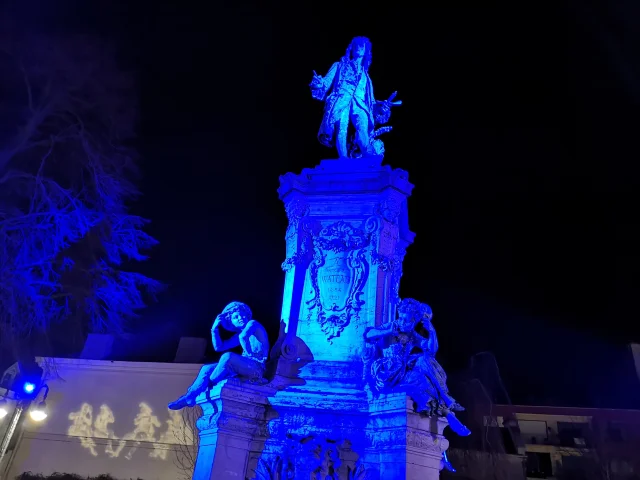The Jesuit HallA sumptuous study library
How fortunate! Valenciennes boasts one of the few libraries dating from before the French Revolution, and is renowned for having remained unchanged since its creation. The richness of its pictorial decorations, the harmony of works and colors, have always been an invitation to study.
Just imagine! 12 paintings representing 36 Jesuit scholars and pedagogues. A veritable “pictorial catalog” indicating where to find the books according to the specialties of the figures depicted: theology, mathematics, physics…
But the best is yet to come… Two large paintings at either end of the room testify to the Jesuits’ desire to unify classical and Christian cultures.
It’s impossible not to stand in awe of the masterly works of Lille-based painter Bernard-Joseph Wamps.
Above the large doorway, he drew his inspiration from Raphael’ sSchool of Athensto pay homage to the scientists and philosophers of antiquity.
Above the small door, you can watch the Dispute of the Blessed Sacrament, representing the Doctors and Fathers of the Church.
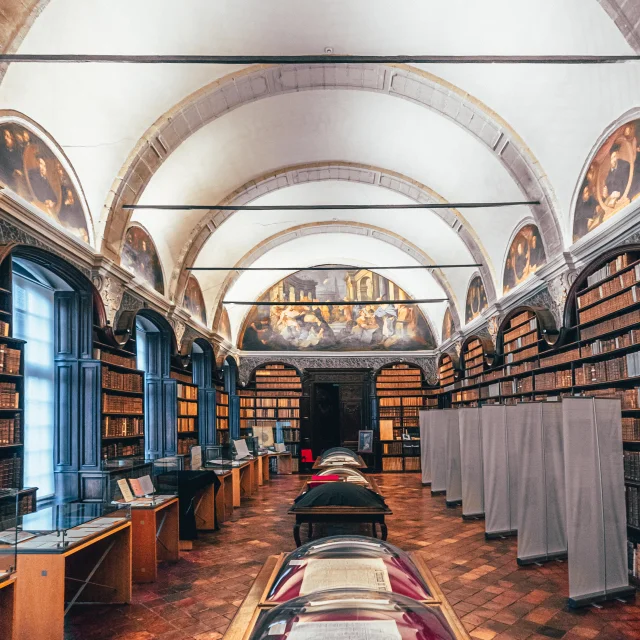 Valenciennes Bibliothequedesjesuites Nablezon
Valenciennes Bibliothequedesjesuites Nablezon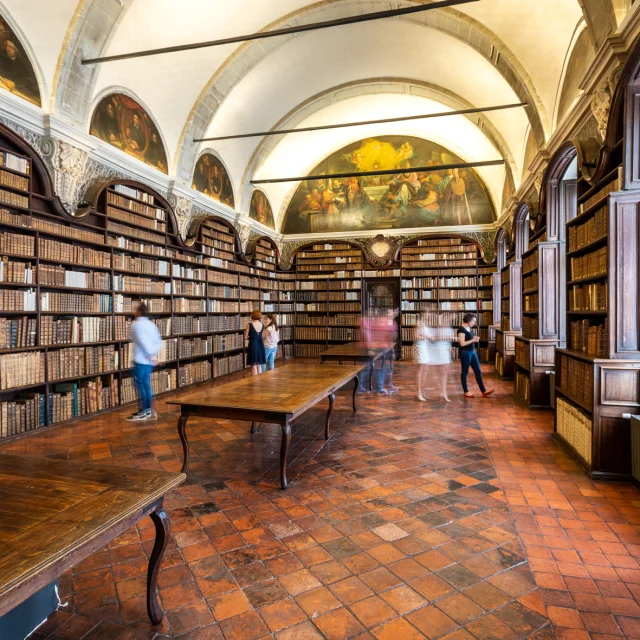 Salle des Jésuites - Valenciennes
Salle des Jésuites - Valenciennes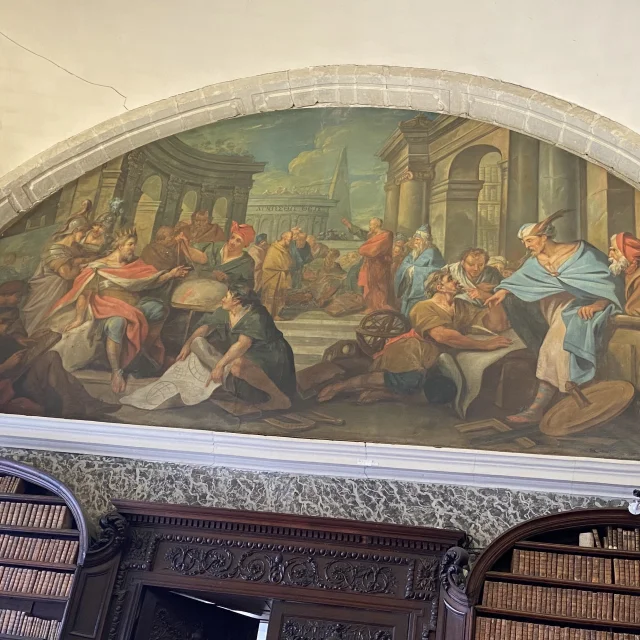 Decors Bibliothequedesjesuites Valenciennes @dboukla
Decors Bibliothequedesjesuites Valenciennes @dboukla